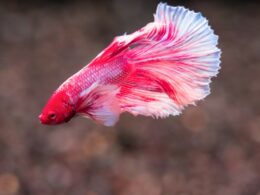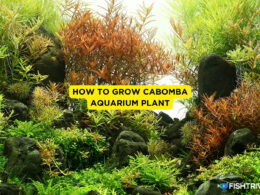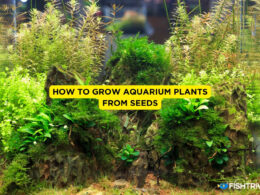In this article Show
Aquariums, with their beautiful inhabitants swimming about, green plants, and vibrant décor, look great in any place. Cleaning the aquarium regularly is needed to keep it looking beautiful. While plants and decorations may be removed, washed, and replaced, the cleaning process presents other difficulties.
Since live plants are fragile and must be kept safe, cleaning them is more complex than cleaning artificial plants. Cleaning off the algae is also more complicated.
Algae are photosynthetic, eukaryotic species that can be found in aquariums and fish tanks. Several different types of algae can thrive in an aquarium and deplete the water’s vital nutrients. As a result, both fish and live plants’ health is compromised.
This article explains how to remove algae from live aquarium plants. So, let’s get this thing rolling.
Also worth reading;
- How To Clean Plastic Aquarium Plants: Complete Guide
- How to Prepare Lava Rocks For An Aquarium
- Can Aquarium Plants Grow in Cold Water? What’s The Best Temperature
Aquarium Plants In The Wild
Since live plants may be injured or killed during the cleaning process, they are more challenging to clean than plastic or silk plants. They are, however, washed in the same manner as artificial plants.
Ordinary debris should be washed or wiped away with a soft cloth while the plant stays in the aquarium. The plant can be cut and scrubbed by hand if there is a lot of algae overgrowth.
It may usually remove algae with a gentle scrub. Live plants can be bleached if that doesn’t work. That may seem severe, but plants with significant algae overgrowth would almost certainly die anyway, so a swift bleach may be worth a shot rather than discarding the plant entirely.
Use a ten-percent bleach solution, but only soak live plants for five minutes at most, and even less if they are fragile organisms. Remove the plants from the bleach solution after soaking and gently rub the leaves to dislodge the algae.
After that, immerse the plants in a bucket of clean, conditioned water for another 10 minutes or so. Before returning them to the tank, give them a thorough rinse. Some plants would likely die due to this process, but those plants were already too overgrown with algae to thrive in most instances.
When it comes to living plants, the safest way is to deal with algae growth as soon as you detect it, so an aquarium can generally rub it off without removing the plant from the tank.
How To Clean Algae From Live Aquarium Plants
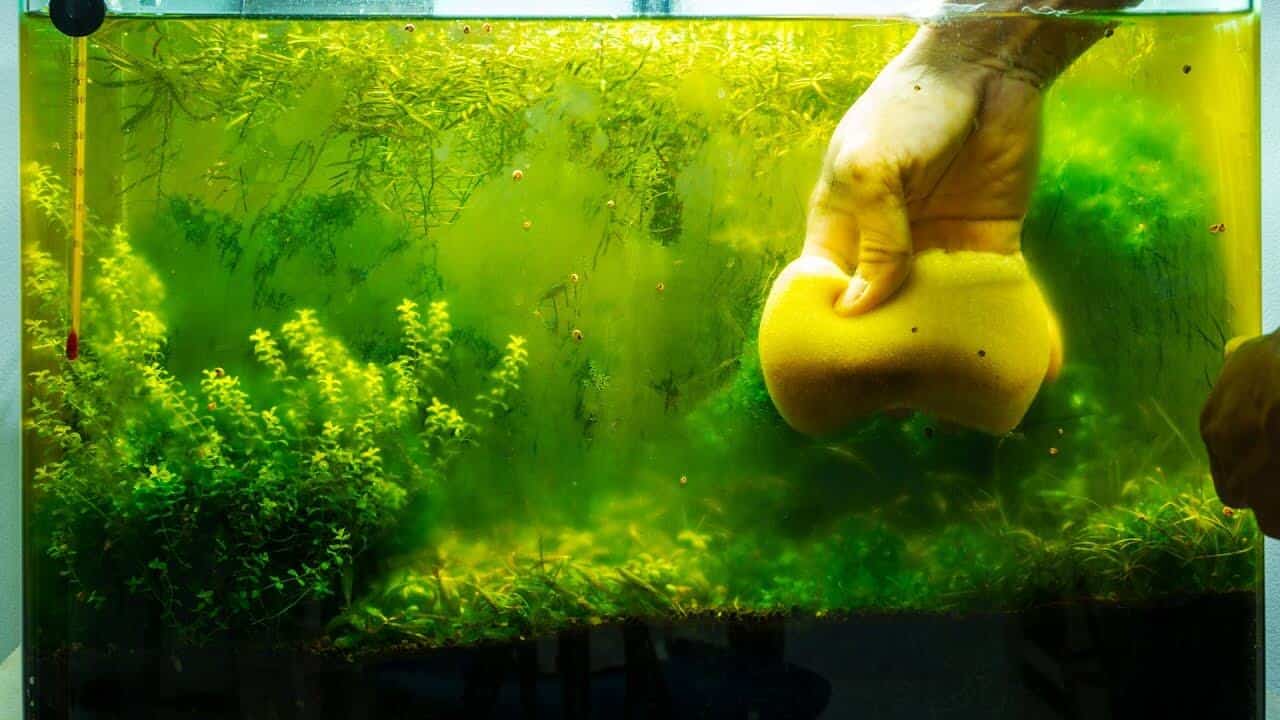
Phase 1: Get Rid of Any Loose Debris
Begin by gently wiping away any loose debris from the live plants with your finger. Simply rubbing or brushing the leaves will reduce the algae. There is no need to remove the plants from the aquarium for this measure.
This phase could be all that is needed to extract all of the algae from the live plants.
Phase 2: Scrub With An Algae Pad
You’re dealing with stubborn algae if you still see algae on the plants after the first stage. Remove the plants from the tank and use an algae pad to scrub them clean. Scrubbing too hard will harm the plants, so avoid it.
This should make this move without using chemicals or soap, which could be fatal to all aquarium fish. This phase will remove the algae from the live aquarium plants.
Phase 3: Use Bleaching Solution
The more challenging the algae, the more difficult it is to get rid of. If the previous step fails, it’s time to use a bleaching solution. This is typically a last-ditch attempt. Be sure to use 10% bleach to eliminate the algae that won’t leave the plants alone.
Keep in mind that bleach can be harmful to live plants, so use it sparingly. Most importantly, if the algae are severe, the plants will ultimately perish. It’s best to get rid of the diseased plants and replace them with new ones.
Cleaning live plants with a 5% bleaching solution is recommended. In a mixing bowl, combine one part bleach with 19 parts water and stir well. Enable three to four minutes for the affected plants to soak. Gently brush away any residual algae with your thumbnail.
If you want to get rid of algae from artificial plants, you can use a 10% bleaching agent. In a mixing bowl, thoroughly combine one part bleach with nine parts water. Soak the plants for five to ten minutes in the mixture. Remove the plants and use an algae pad to clean away any residual algae gently.
Phase 4: Rinse and Reposition Them
You must soak the live aquarium plants in conditioned water after you have successfully removed the algae. After a half-hour, your plants will be able to be placed back in the aquarium.
These measures will ensure that you can clean algae off live aquarium plants successfully. After that, you must take steps to avoid potential issues.
Aquarium Algae Types
These are the types of aquarium algae;
1. Green Carpet Algae
This is a widespread algae that can quickly develop and spread in your aquarium. It’s most commonly found on rocks, decorations, and aquarium glass walls
2. Green Water
These algae float on the surface of the aquarium water, turning it green. It causes significant aquarium problems by depleting oxygen levels and preventing artificial light from reaching the aquarium’s inhabitants.
3. Brown Algae
This is the most common type of algae that forms a brown layer sheet on the bottom layer and sidewalls of a new aquarium set up in dim light. It can quickly remove brown algae with an algae scrubber pad. In general, as your fish tank gets older, this problem gets better.
4. Red Algae
This is the most challenging form of algae, growing and spreading quickly on driftwood and other decorations. It can reach a height of 3 cm and forms a dense green carpet of grass.
5. Black Beard Algae
This is one of the most difficult algae to deal with because few animals consume it. It grows in very dense, bushy clumps, typically black or grey, as its name suggests.
This algae likes to grow on driftwood, aquarium furniture, and plants, and it can fully engulf an aquarium in one to two years if left unchecked. Unfortunately, since there are so many variables that may lead to BBA spread, there is no one-size-fits-all care.
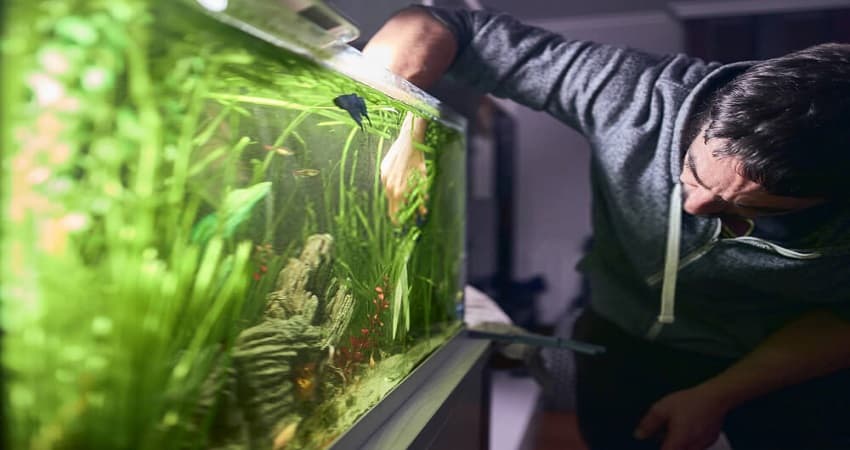
6. Algae In The Hair
We’re talking about the various forms of algae that look like wet hair when you take them out of the tank in this category. These algae can be a concern because they develop quickly and are difficult to remove. An abundance of some nutrients, too much sun, or a lack of nutrients are the most common causes.
As a result, consider reducing your lighting time, increasing fertilization, or lowering your iron levels. You may also assist them by using a toothbrush to remove big clumps manually.
7. Blue-Green Algae
This is a cyanobacterium that spreads like a slimy blanket over the substrate, plants, and decorations. It has a distinct odor that many fish keepers can detect well before the bacterial colony is noticeable.
While no one knows what causes BGA, better aquarium maintenance and enhanced water circulation with an air stone or powerhead will help keep it at bay.
Is Algae A Problem In A Fish Tank?
Algae, contrary to common opinion, are not harmful. They use photosynthesis, just like plants, to turn light and organic nutrients in the water into new algae growth.
That means they generate and consume oxygen during the day and night. Algae, unlike plants, are a less complex lifeform that can live in “worse” environments, which means they can absorb more wavelengths of light and ingest substances that plants cannot.
Algae are beneficial to your aquarium environment because it attracts various fish and invertebrates and serves as a means of filtration. Furthermore, such algae may be attractive and add to the natural appearance of an aquarium.
Most people, however, dislike their presence, particularly in planted tanks, because it obscures the scenery and viewing area.
The fact is that there is no such thing as a flawless planted aquarium that is algae-free 100 percent of the time. Assume you have a grassy neighbor with a well-kept lawn.
Even they will find weeds from time to time that they must deal with. Let’s say you have five dandelion weeds that have grown to be one foot tall on your not-so-nice lawn. If you mow your lawn, it will appear that there are no weeds.
Similarly, we want to learn how to monitor algae virtually efficiently, so the tank appears spotless.
Conclusion
Aquarium plants add color and excitement to your fish tank while also providing fun places for them to swim, hide, and play. Clean algae and other debris off your aquarium plants regularly to keep your tank safe and the water quality high.
If any of your plants grow fungus or disease, you can quarantine them and destroy toxic algae and other substances with various solutions. You should try to clean your aquarium as well as live aquarium plants also.








